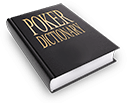Poker Rules - How to Play Poker Game
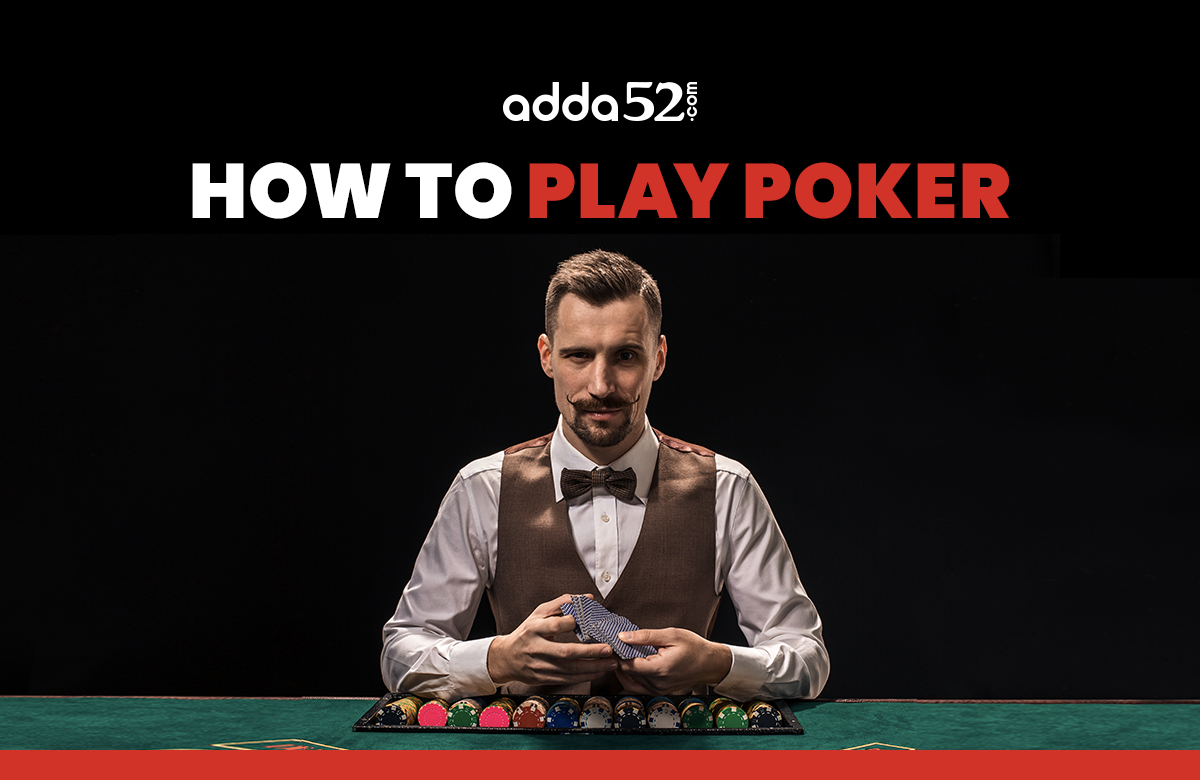
Introduction
Poker is a fascinating card game where skill meets strategy, and every hand is a chance to outplay your opponents.
In this game, the players aim to either have the best hand or bluff their way to victory. This blog will guide you through the basics, from understanding hand rankings to mastering essential concepts like table positions and betting actions.
Whether you're a beginner looking to learn poker rules or an experienced player seeking advanced strategies, we've got you covered. So, shuffle the deck, deal the cards, and let's dive into the fascinating world of poker. This article will give you everything you need to know about how to play poker game & rules.
What is Poker?
Poker is a popular card game that can be played between 2 to 10 players. The goal is to have the best hand of cards or to bluff your opponents into thinking you have a better hand than you do. One of the best ways to learn poker online is by participating in freeroll games on a poker app like Adda52. Freeroll games allow you to play poker against other players without risking any money.
Objective
The objective of the poker game is to win chips or money by having the best hand or convincing other players to fold. Players bet based on their confidence in their cards, aiming to create a strong hand through skill and strategy. The winner in poker is determined by the hand ranking, which follows a hierarchy. The highest-ranking hand is the Royal Flush, followed by the Straight Flush, Four of a Kind, Full House, Flush, Straight, Three of a Kind, Two Pair, Pair, and finally, the High Card Poker. Bluffing, reading opponents, and calculating odds are other crucial elements. The ultimate goal of a player is to build their chip stack by either having the best hand at showdown or making others believe you do.
Poker Hand Rankings:
Poker hand rankings are essential to understand if you want to play the game.
Hand ranking will help you determine the strength of your hand and whether or not you should bet, call, or fold.
- Royal Flush: This is the highest-ranking hand and consists of an Ace, King, Queen, Jack and 10 of the same suit. It is rare and is considered an unbeatable hand (A♥ K♥ Q♥ J♥ 10♥ )
- Straight Flush: This hand consists of any five cards of the same suit in numerical order. For example, a hand containing a 5 of Hearts, 6 of Hearts, 7 of Hearts, 8 of Hearts, and 9 of Hearts is a Straight Flush (5♥ 6♥ 7♥ 8♥ 9♥ )
- Four of a Kind: The hand with four cards of the same rank. For example, four Queens ( Q♥ Q♥ Q♦️ Q♣️ 5♥ )
- Full House: This hand contains three cards of one rank and two cards of another rank. For example, three Queens and two Jacks is a Full House (Q♥ Q♥ Q♦️ J♥ J♥ )
- Flush: This hand contains any five cards of the same suit. For example, a hand containing 2 of Hearts, 5 of Hearts, 9 of Hearts, Jack of Hearts, and King of Hearts is a Flush (2♥ 5♥ 9♥ J♥ K♥ )
- Straight: This hand contains five cards in numerical order, regardless of suit. For example, a hand containing 2 of Hearts, 3 of Clubs, 4 of Diamonds, 5 of Diamonds, and 6 of Hearts is Straight (2♥ 3♣️ 4♦️ 5♦️ 6♥).
- Three of a Kind: This hand contains three cards of the same rank. For example, three Jacks (J♥ J♣️ J♦️ 3♥ 7♦️)
- Two Pair: This hand contains two different pairs. For example, two Queens and two 10s (Q♥ Q♦️ 10♥ 10♦️ 8♣️)
- Pair: This hand contains two cards of the same rank. For example, two Jacks (J♥ J♣️ 8♦️ 3♥ 7♦️)
- High Card: This hand is the lowest-ranking hand and is used when no other hand combinations are present. It is determined by the highest card in the hand (J♥ 6♣️ 8♦️ 3♥ 7♦️).
Poker Positions:
Your position at the table can greatly affect your strategy. Players who act later in the betting round have more information and, therefore, have an advantage.
In poker, table position refers to the player's location in relation to the dealer button, and it can have a significant impact on the way a hand is played. There are three main types of table positions in poker: early, middle, and late.
Early position:
Players in early position are the first to act in a betting round. This includes the Small Blind, the Big Blind, Under the Gun (UTG), UTG+1, and UTG+2. Players in early position have the least amount of information about the other players' hands and should generally play tighter and more conservatively.
Middle position:
Players in middle position are in a better position to gather information about their opponents than those in the early position. This includes Lojack and Hijack.
Middle position players have more options and can play a wider range of hands. They should be more selective with their starting hands but can be more aggressive when the opportunity arises.
Late position:
Players in late position have the most information about their opponents and can use this to their advantage. This includes Cutoff and button (or dealer).
Late position players can play a wider range of hands and be more aggressive with their betting and raises. Players in late position should be looking to take advantage of their position and build the pot when possible.
It's important to note that the table position is not fixed and can change from hand to hand as the dealer button rotates clockwise. Understanding the dynamics of table positions can help players make more informed decisions and improve their overall poker strategy.
Dealer Button
A dealer button is a small circular disc that indicates which player is the dealer for a particular hand. The dealer button is typically passed clockwise around the table after each hand so that each player has a chance to be the dealer.
The position of the dealer button plays a critical role in determining the order of betting and the positions of the blinds, which can affect the game strategy. Additionally, the button is also used to determine the order of card distribution in certain games like Texas Hold'em and Omaha.
Blinds and Antes
Antes
In poker, the term "ante" refers to a mandatory bet that all players must contribute to the pot before each hand begins. It ensures there's always something at stake, encouraging active participation. Antes vary in size, helping build the initial pot and adding a thrill to each round of play.
The Small Blind and Big Blind
In poker, the small blind and big blind are forced bets posted by the players to the left of the dealer button. The small blind is typically half the minimum bet for a particular hand, and the big blind is the full minimum bet. Blinds help stimulate action and build the pot before players receive their cards. After posting blinds, players proceed with betting rounds.
Betting Rounds in Poker:
Preflop:
The first round of betting starts with the player to the left of the big blind (the player who is required to post a "blind" bet before the cards are dealt).
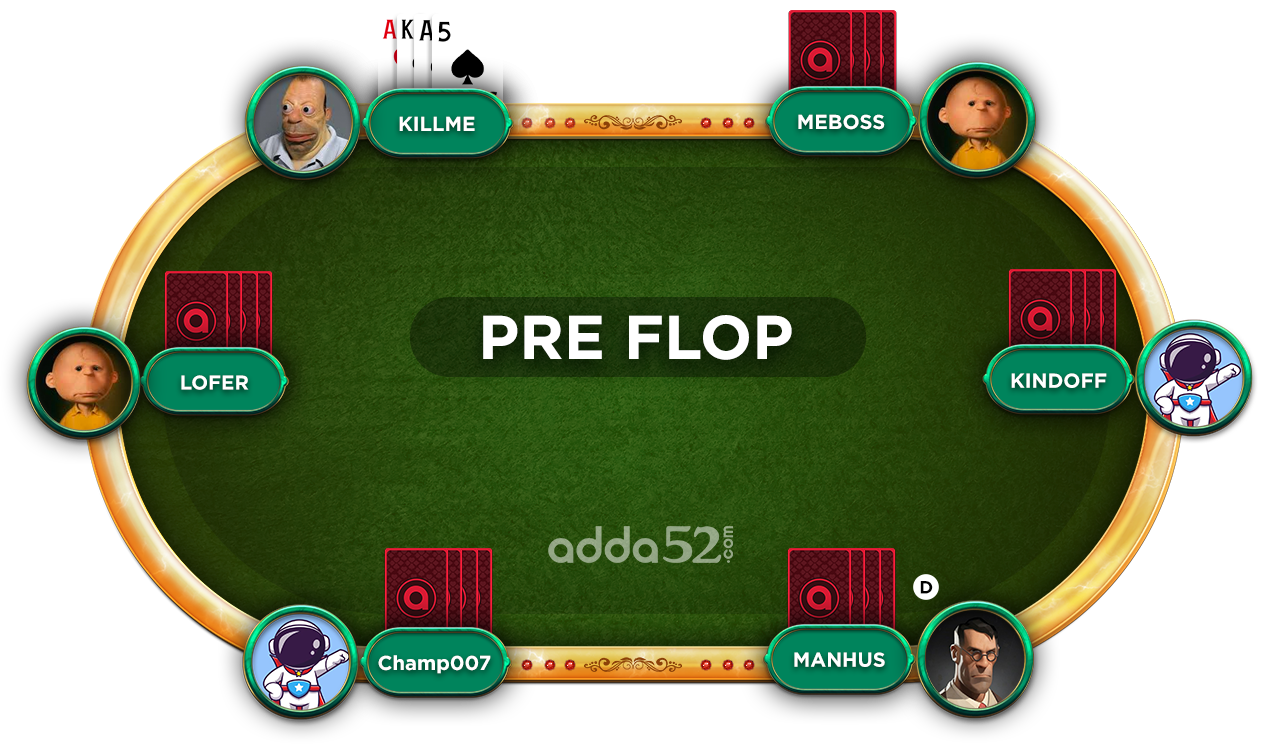
The Flop:
The dealer then deals the first three community cards called the flop. The second betting round begins with the player to the immediate left of the dealer.

The Turn:
The dealer then deals the fourth community card called the turn. The third round of betting starts with the player to the left of the dealer.
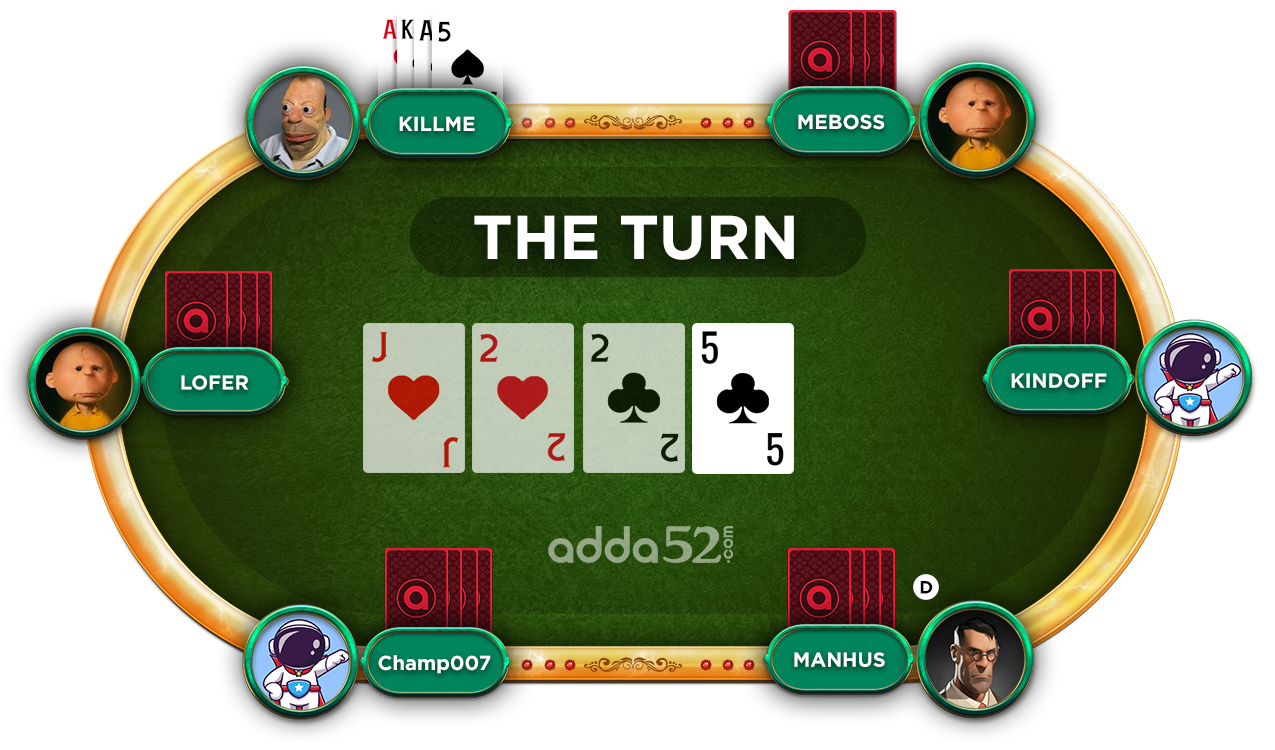
The River:
The dealer then deals the fifth and final community card called the river. The fourth and final round of betting starts with the player to the left of the dealer.
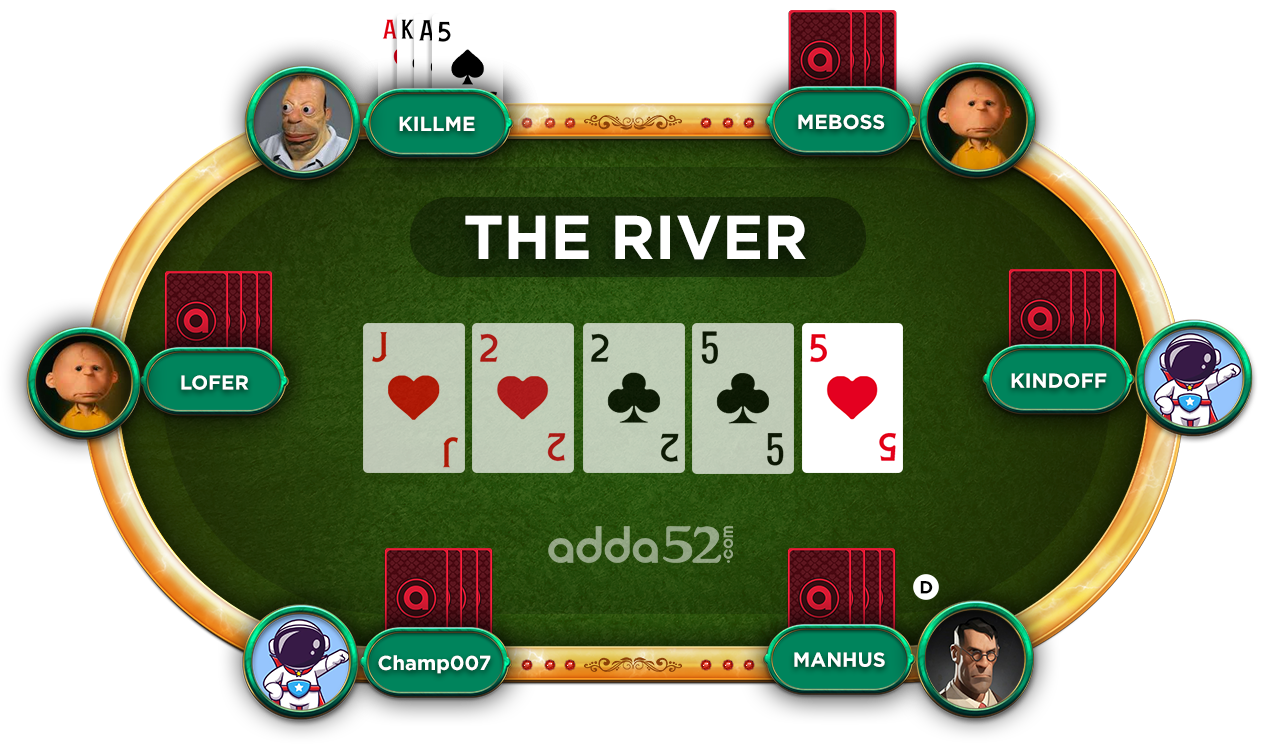
The Showdown:
If more than one player is left after the final round of betting, a showdown occurs, and the player with the best hand wins the pot.
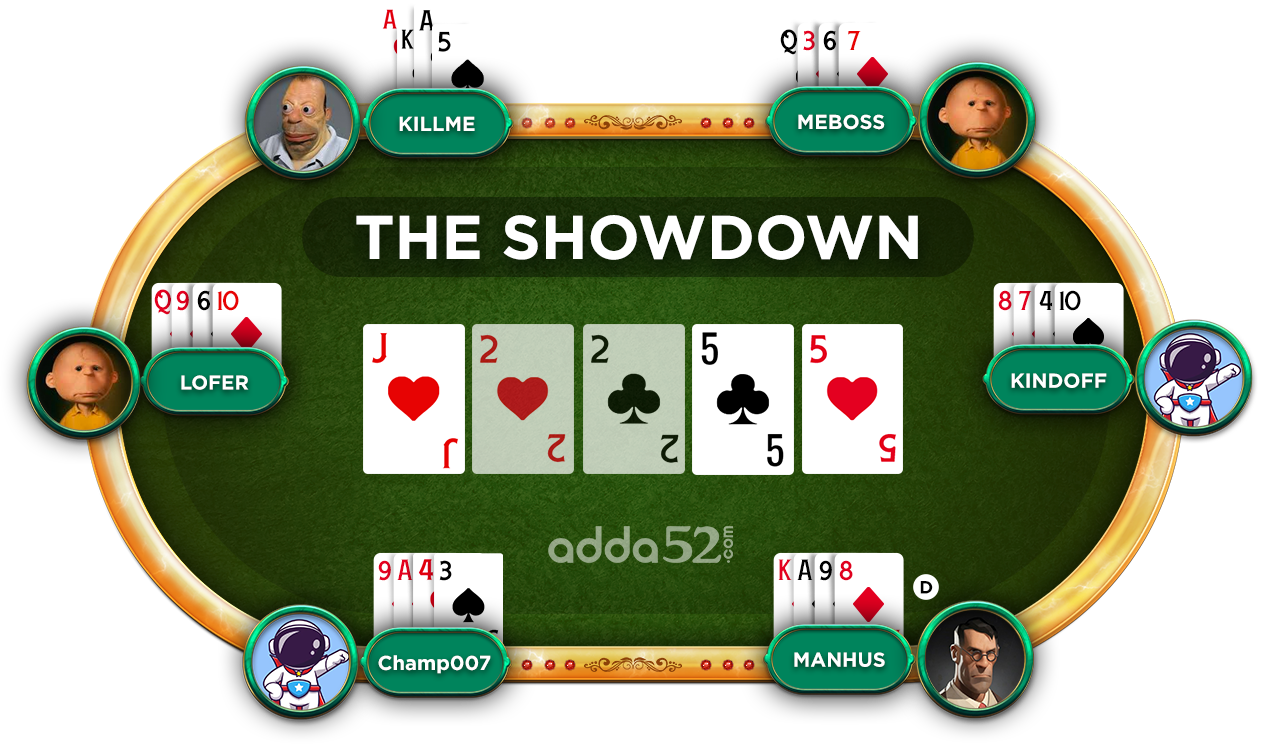
The Actions
How to Deal in Poker
Dealing in poker is the process of distributing cards to the players at the table. The dealer is responsible for enforcing the rules of the game, such as betting limits and proper card handling. Here is the basic process of dealing in a game of poker:
- The dealer shuffles the deck of cards thoroughly
- He deals each player their hole cards (the cards that are dealt face down and kept hidden from other players). He starts with the player to their left and continues clockwise around the table
- The dealer then deals the flop, turn, and river (community cards that are dealt face-up in the centre of the table) in Texas Hold'em and Omaha
- After the final round of betting, the dealer will reveal the hole cards of the remaining players and the best hand wins
- The dealer button is then moved clockwise to the next player, and the process begins again.
Betting Actions
Betting actions refer to the options available to a player when it is their turn to act during a betting round. The most common betting actions are:
Fold: A player can fold their hand if they do not want to continue playing the current hand. When a player folds, their cards are forfeited along with the money they have already invested in the pot
Check: A player can check if no bets have been made in the current betting round. This allows the player to stay in the hand without making a bet
Call: A player can choose to call if a bet has been made in the current betting round. This means the player matches the current bet and continues playing the hand
Raise: A player can choose to raise if a bet has been made in the current betting round. This means the player increases the current bet and continues playing the hand
All-in: A player can choose to go all-in if they do not have enough chips to make a normal bet or raise. This means that the player bets all of the chips they have remaining
Bet: A player can bet if no bets have been made in the current betting round. This means the player is the first to put money in the pot in the current betting round
It's important to note that the available betting actions and the betting structure can vary based on the game type, limit type, and the specific poker variant being played.
How to Bet in Poker
Here is the process of betting in poker:
- The player to the left of the dealer (or the "small blind") is required to place a small bet before the cards are dealt. The player to the left of the small blind (or the "big blind") is required to place a larger bet
- Once the hole cards have been dealt, the first round of betting begins with the player to the left of the big blind. This player has the option to call (match the big blind), raise (increase the bet), or fold (give up their hand and exit the round)
- The betting proceeds clockwise around the table, with each player having the same options
- Once all players have had a chance to act, the dealer will reveal the flop, turn, and river (community cards) in Texas Hold'em and Omaha
- Another round of betting begins with the player to the left of the dealer
- Once all players have had a chance to act, the dealer will reveal the turn and river cards
- The final round of betting begins with the player to the left of the dealer, and then the remaining players reveal their hole cards
- The player with the best hand wins the pot
It's important to note that different variations of poker games may have distinct betting structures, such as pot-limit or no-limit. Additionally, some games may include more rounds of betting, while others have a fixed limit on the amount that can be bet.
Limit vs No Limit
No Limit
- In no-limit poker, there are no predetermined betting limits
- Players can bet any amount of their chips at any time during a hand, including going all-in, risking their entire stack
- The absence of betting limits adds an element of unpredictability and allows for larger swings in chip stacks
Limit
- In limit poker, there's a predetermined betting limit for each round
- Players can only bet or raise by a fixed amount, typically set before the game starts
- The betting limits restrict the amount of money a player can wager, providing a more controlled and predictable environment
In summary, the key difference lies in the betting structure. Limit poker has fixed betting limits, while no-limit poker allows players the freedom to bet any amount, creating a more dynamic and potentially high-stakes game.
Poker Etiquette
Poker etiquette is essential for maintaining a positive and fair gaming environment. It involves being respectful to fellow players, refraining from excessive conversation during hands to ensure focus, avoiding the show of cards when folding to prevent influencing the game and making decisions promptly to keep the game flowing smoothly.
Furthermore, players are expected to adhere to a strict code of honesty, refraining from cheating or engaging in any unethical behaviour during the game. Abiding by this code not only fosters a more enjoyable atmosphere but also maintains the integrity of the game.
Variations in Poker
There are many variations of poker, each with its own set of rules and strategies. Here are a few examples of the most popular poker variations:
Texas Hold'em
Texas Hold’em poker is the most popular poker variation played with two hole cards and five community cards. The goal of the game is to make the best five-card hand using any combination of the hole cards and community cards.
Pot Limit Omaha
Pot Limit Omaha is similar to Texas Hold'em, but each player is dealt four hole cards and must use exactly two of them in combination with the five community cards to make the best hand. PLO4, PLO5 and PLO are the most popular forms of Omaha Poker.
Crazy Pineapple
Each player is dealt three hold cards in this variation of the game. The rules to play Crazy Pineapple are similar to Texas Hold’em but with a twist – before the turn round, the players have to discard one card.
Seven-Card Stud
This variation is played with seven cards per player, five community cards and two hole cards. The goal is to make the best five-card hand using any combination of the seven cards.
Razz
This is a variation of the Seven-card stud, but the goal is to make the lowest possible hand rather than the highest. Straights and flushes do not count against the player, and the best hand is A-2-3-4-5.
Draw Poker
This variation is played with five cards per player and allows players to discard and replace cards in an attempt to improve their hands. The most popular Draw Poker is 5 Card Draw.
Caribbean Stud Poker
This variation is played against the house rather than against other players. The goal is to make a better hand than the dealer, and the game uses a traditional poker hand ranking system.
H.O.R.S.E
This is a mixed-game format that includes several variations of poker in one round of play, including Texas Hold'em, Omaha Hi-Lo, Razz, Seven-card Stud, and Seven-card Stud Hi-Lo.
Poker Card Rules to Play Poker
Poker Rules to Play No Limit Texas Hold’em Poker
Here are the basic poker card rules for playing No Limit Texas Hold'em:
- Each player is dealt two hole cards (face down) and five community cards (face up) in the centre of the table
- The goal of the game is to make the best five-card hand using any combination of the two hole cards and the five community cards
- The player to the left of the dealer (the "small blind") must post a small blind, and the player to the left of the small blind (the "big blind") must post a big blind. The big blind is usually twice the amount of the small blind
- The first round of betting begins with the player to the left of the big blind. This player has the option to call (match the big blind), raise (increase the bet), or fold (give up their hand and exit the round)
- The betting then proceeds clockwise around the table. In No Limit Texas Hold'em, there is no maximum bet, so players can bet any amount of chips they have in front of them
- Once all players have had a chance to act, the dealer will reveal the flop, turn, and river (community cards)
- Another round of betting begins with the player to the left of the dealer
- Once all players have had a chance to act, the dealer will reveal the turn and river
- The final round of betting begins with the player to the left of the dealer, and then the remaining players reveal their hole cards
- The player with the best hand wins the pot.
Rules of Poker To Play Pot Limit Omaha Poker
Here are the poker game rules for playing Pot Limit Omaha:
- Each player is dealt four hole cards (face down) and five community cards (face up) in the centre of the table
- The goal of the game is to make the best five-card hand using exactly two of the four hole cards and three of the five community cards
- The rest of the rules of the game are similar to Texas Hold’em.
Poker Rules To Play Pot Limit 5-Card Omaha
Here are the poker game rules for playing Pot Limit 5-Card Omaha:
- Each player is dealt five hole cards (face down) and five community cards (face up) are dealt in the centre of the table
- The goal of the game is to make the best five-card hand using three of the five hole cards and two of the five community cards
- The rest of the playing rules are similar to Pot Limit Omaha. Pot Limit 5-Card Omaha is often considered to be a more "action-packed" game than Pot Limit Omaha because players have more options and the potential for bigger pots.
Table Stakes in Poker
Table stakes is a rule in poker that states that players can only wager the amount of money that they have in front of them at the start of a hand.
The main purpose of table stakes is to prevent players from losing more money than they can afford and to ensure that players are only able to bet what they have on the table rather than relying on credit or outside funds.
Table stakes also mean that players cannot leave the table during a hand, except when they rebuy if they run out of chips.
Cash Game Stakes
The stakes of a cash game refer to the minimum and maximum amount of money that can be bet in each round of betting.
Tournament Stakes
In tournaments, the buy-in is fixed, and players have a set amount of chips for the duration of the tournament, regardless of the size of the bets.
Poker Tips & Strategy
Here are some advanced poker strategies you must follow on the tables to achieve success as a professional player:
Position: Your position at the table can greatly impact your strategy and the hands you choose to play. Being in the late position (the dealer or the last few players to act) allows you to gather more information from the other players before making your move.
Hand Reading: The ability to read the strength of your opponent's hands is crucial in poker. Observe your opponents' betting patterns and try to deduce what kind of hand they might have based on their actions.
Pot Odds: Pot odds refer to the ratio of the current size of the pot to the cost of a contemplated call. Understanding pot odds can help you make more profitable decisions when facing a bet or raise.
Bluffing: Bluffing is a powerful tool in poker, but it should be used sparingly and with caution. A well-timed bluff can be the difference between winning and losing a hand.
Emotion Control: Keeping your emotions in check is crucial in poker, as it allows you to make rational decisions and avoid tilt (a state of mental or emotional confusion often marked by reckless behaviour).
Those are the basics of how to play poker and some advanced concepts you must know before joining the game with real money. Poker is a game of skill, and the more you play, the better you will get.
Just like poker, you can learn to play other popular games like Teen Patti, Call Break, Ludo, etc online easily.
Frequently Asked Questions
What is the highest card in poker?
In poker, the highest card is the Ace. It's like the top dog in the deck and can help you win if your opponents don't have a better hand.
Is poker mostly luck or skill?
Poker is majorly a skill game. The cards you dealt are random, but skill helps you make smart decisions with those cards, read opponents, and increase your chances of winning over time.
How do you play basic poker?
To play basic poker, get familiar with hand rankings, understand the betting rounds, and learn when to hold, fold, or bet. Start with simple versions like Texas Hold'em and build your strategy from there.
What Are Hole Cards?
In poker, hole cards are the face-down cards dealt to each player. These cards are only visible to the individual player and are used in combination with the community cards to make the best possible hand.
What are Community Cards?
Community cards are cards that are dealt face-up on the "board." These cards are shared by all players in the game and can be used in combination with a player's hole cards to make the best possible hand. There are typically five community cards in these games, which are dealt in three rounds: the flop, the turn, and the river.
Conclusion
Mastering poker demands a blend of strategy and skill. From understanding hand rankings and navigating the complexities of table positions to embracing key concepts like bluffing and betting strategies is crucial. As the cards unfold, the world of poker opens up, offering endless possibilities. The journey may start with basics, but it's the mastery of these elements that separates the novice from the seasoned player in this dynamic card game.
